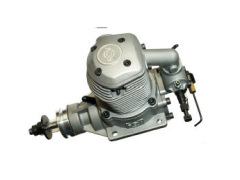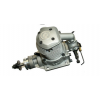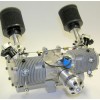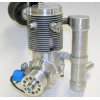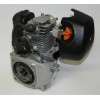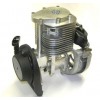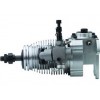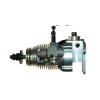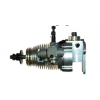
The RCV - rotary cylinder valve four stroke engine represents a major advance in model engine design. Although its moving components (piston, crank, cylinder and rotary valve) are totally conventional, they are arranged in a radically novel configuration to provide the aero modeller with several key benefits, whilst havin similar handling characteristics to other 4-stroke model engines:-
The RCV58-CD has been designed to meet the demand from aero modellers who want a quality engine, that is easy to use and is competitively priced. Comparable in power to conventional 52 4-stroke engines (or .40 2-stroke engines), this is the ideal choice for scale, aerobatic, fun and general flying. So if you are looking for a reliable, easy to use 4-stroke engine, that is the same height as a 2-stroke engine, our die cast RCV58-CD engine is a perfect option.
The RCV 4-cycle engine has only one more moving component than a 2-cycle engine -the rotating cylinder itself. The cylinder is suspended between two bearings which allow it to rotate freely around the piston; the piston, and crank are entirely conventional. A gear formed around the base of the cylinder meshes with a gear on the crank. As the piston reciprocates and the crank turns, the cylinder rotates around the piston. At the top end of the rotating cylinder there is a single port leading to the combustion chamber. This is surrounded by a fixed timing ring with three radially arranged ports; inlet, ignition and exhaust. This simple valve arrangement serves the combustion chamber as the engine cycles through the conventional 4-cycles: induction, compression, power and exhaust. Ignition is achieved through a standard 4-cycle glow plug exposed once only during each complete cycle. The rotating cylinder is effectively combined with the rotary valve in a single component hence - RCV - Rotating Cylinder Valve.

